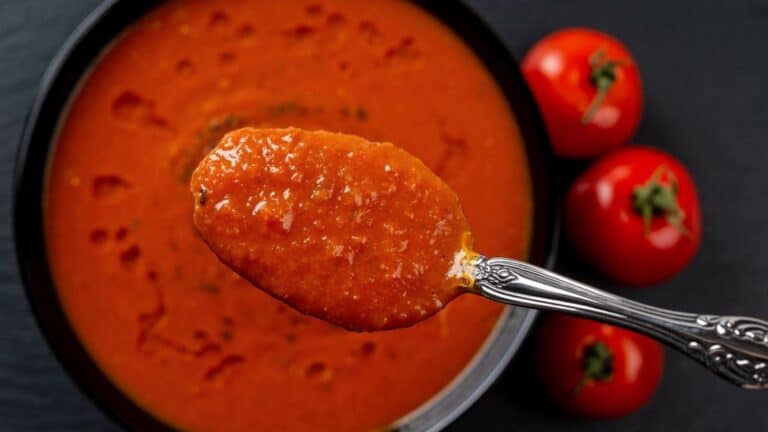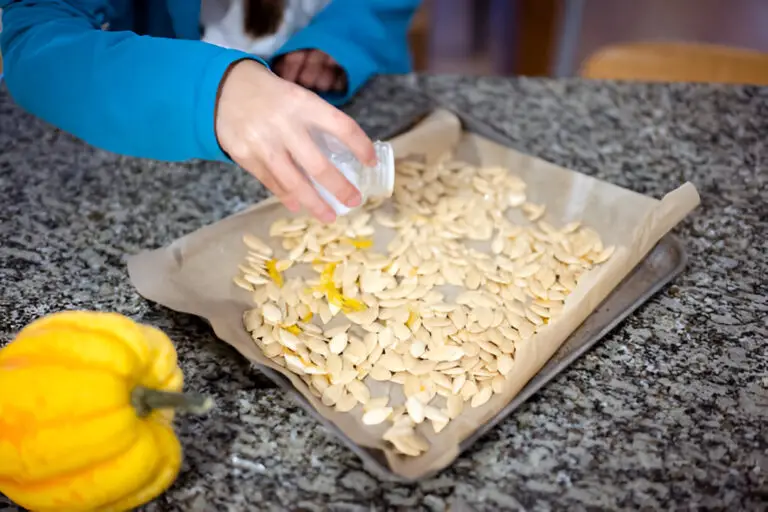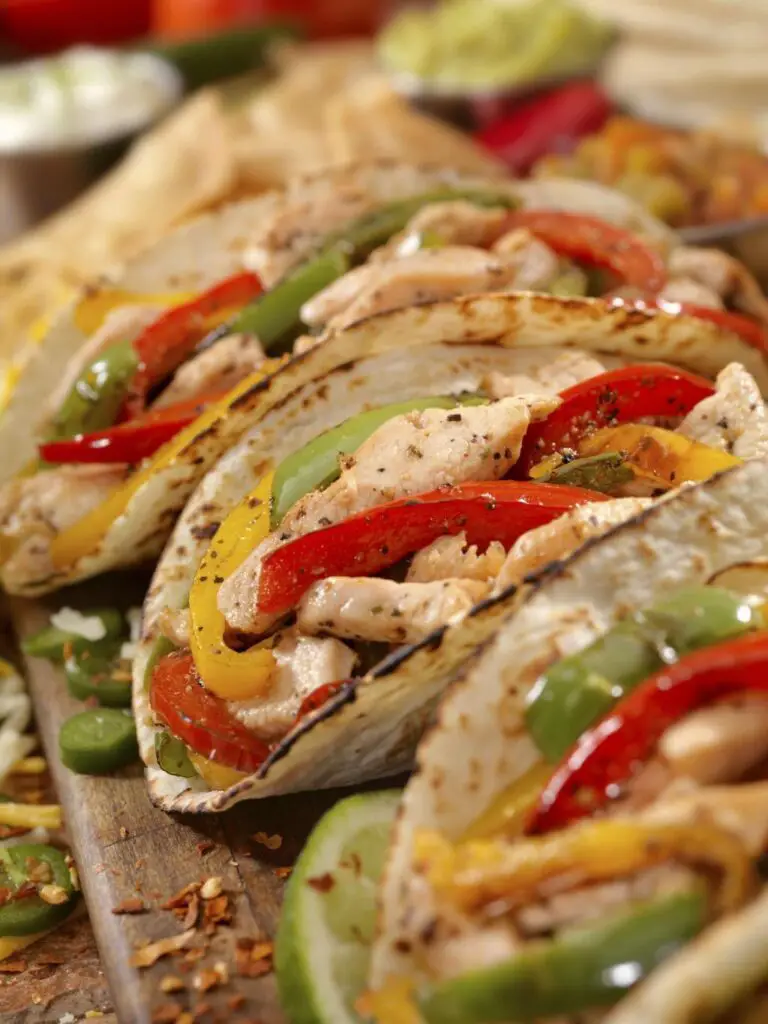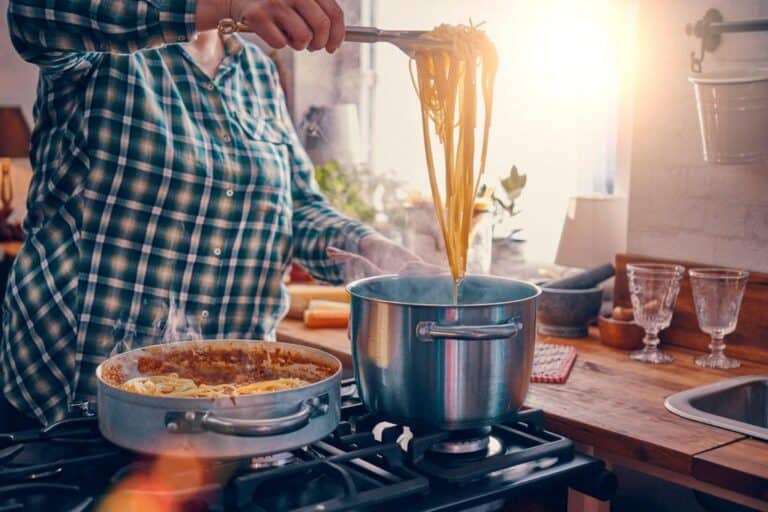Tips for Reheating Gravy Twice Without Compromising Taste
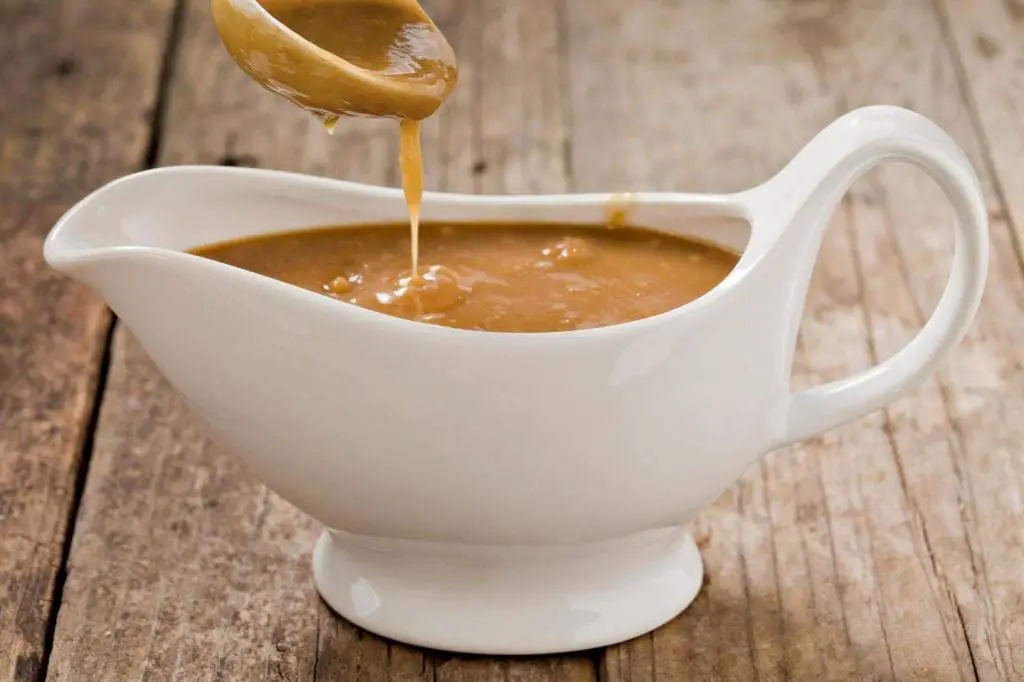
Gravy, that rich and savory sauce, is a beloved accompaniment to numerous dishes. Gravy is versatile. It can be smothered over mashed potatoes or poured atop juicy roasts. It has the power to elevate even the simplest of meals into something truly special. But what happens when you find yourself with leftover gravy? Do you toss it out or attempt to salvage its deliciousness?
We’ve all been there—after an indulgent meal, we’re left with excess gravy lingering in our refrigerator. It may be tempting to simply reheat those luscious leftovers for another meal. But can you reheat gravy more than once without compromising its taste and safety?
This article aims to unravel the mysteries surrounding reheating gravy multiple times. We’ll delve into the potential risks associated with doing so. We’ll also arm you with practical guidelines for handling your precious leftover liquid gold safely.
Before you remove that ladle from hiding, let us determine whether a second round of heating your preferred sauce truly evaporates the mustard. Or, it might be time for alternative solutions that don’t compromise flavor or put anyone’s well-being at risk!
Keep reading to become a seasoned pro in the ins and outs of reheating gravy while keeping things both delicious and safe on your culinary journey!
Why Do You Need to Reheat Your Gravy?
Reheating gravy serves both practical and culinary purposes. Reheating ensures your gravy is safe to eat by eliminating any bacteria that may have grown during storage.
This simple step guarantees a healthier dining experience, especially when dealing with leftovers. Moreover, reheating revives the flavors and consistency of your gravy. It restores it to its original luscious state.
When considering the culinary aspect, reheating gravy helps maintain its texture and prevents separation. This is particularly crucial for gravies with butter or cream bases. By gently reheating, you can blend the ingredients back together seamlessly. This avoids the unappetizing layer of oil on the surface.
Additionally, reheating allows you to adjust the consistency of your gravy to suit your preferences. You can make it thicker or thinner.
In summary, reheating your gravy not only ensures food safety but also enhances its overall taste and texture. It’s a simple yet effective practice that elevates your dining experience, making your meal as enjoyable as the first time it was served.
| Benefits of Reheating Gravy |
| 1. Ensures food safety |
| 2. Revives flavors |
| 3. Maintains texture |
| 4. Prevents separation |
| 5. Allows consistency adjustment |
The Risks of Reheating Gravy Multiple Times
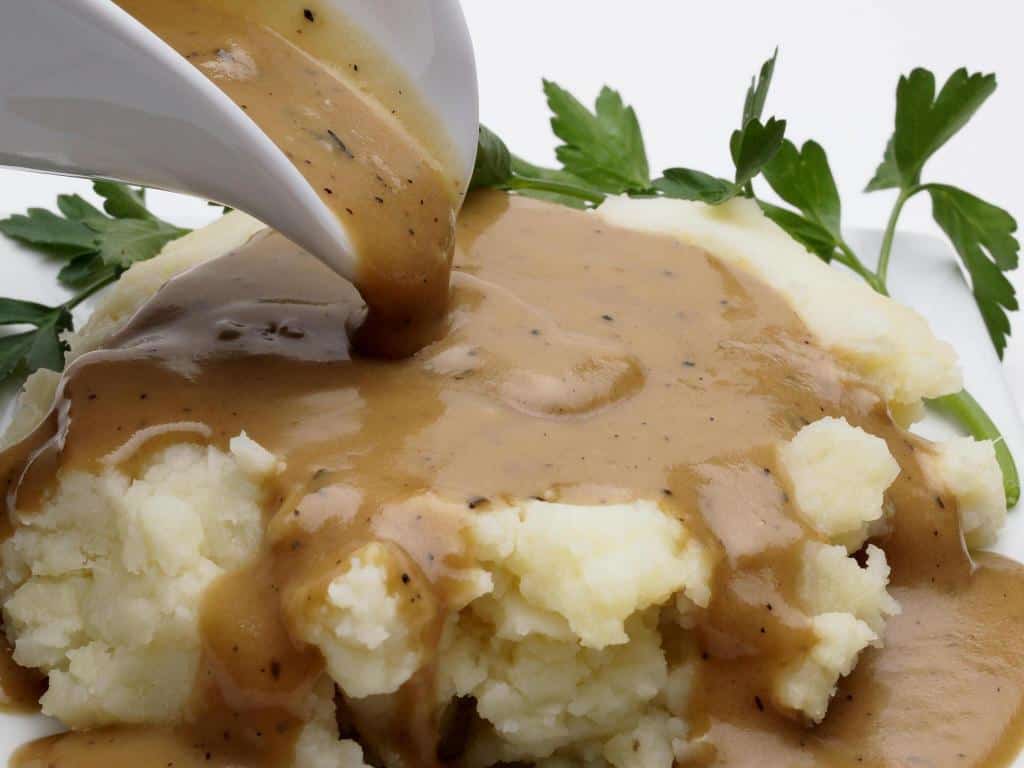
Leftover gravy can be a delicious addition to future meals, but is it safe to reheat gravy more than once? While reheating leftover gravy once is generally considered acceptable from a food safety standpoint. However, reheating it multiple times may pose some risks.
One main concern with reheating gravy more than once is the increased opportunity for bacterial growth. Each time you heat and cool the gravy, bacteria have a chance to multiply and potentially reach unsafe levels. This is especially true if the leftover gravy has been sitting at room temperature for an extended period before being refrigerated.
Another risk associated with multiple reheatings is the gradual breakdown of flavor and texture. As you repeatedly heat the same batch of gravy, it can lose its original taste and consistency. This happens due to prolonged exposure to high temperatures. The flavors may become duller or even develop off notes, while the thickening agents in the sauce might break down over time.
How to Reheat Leftover Gravy Twice
To ensure food safety when heating leftovers, like gravy, follow proper reheating techniques.
The first step is to transfer the leftover gravy from its original container into a microwave-safe dish or saucepan. This helps facilitate even heating and ensures that all parts of the gravy reach the desired temperature.
If using a microwave, cover the dish with a microwave-safe lid or plastic wrap, leaving a small vent for steam to escape. Heat the gravy on medium heat in short intervals, stirring occasionally. This will help prevent uneven heating and reduce the risk of bacterial growth.
When reheating on the stovetop, place the saucepan over low heat and stir constantly to distribute the heat evenly. Adding some additional liquid, like water or broth, can also help revive any lost moisture during reheating.
In order to comply with food safety regulations, make sure that your gravy reaches an internal temperature of at least 165°F (74°C) using either method. Use an instant-read thermometer to check this before consuming.
For an extra touch of flavor when reheating gravy, consider adding a small amount of broth or stock to rejuvenate the taste and texture. Additionally, incorporating a small knob of butter into the reheating process can help maintain a smooth and glossy consistency.
Remember, no matter which method you choose, keeping a close eye on the reheating process is crucial. It’s important for achieving optimal results without compromising the quality of your delicious gravy.
Safety Concerns of Reheating Food Multiple Times
Reheating food multiple times can pose risks to our health. This is especially true for potentially hazardous items like gravy. One of the main concerns is bacteria growth due to temperature abuse. When leftovers are repeatedly reheated and left at room temperature for extended periods of time, this creates an ideal breeding ground for bacteria.
Bacteria such as Staphylococcus aureus, Clostridium perfringens, and Bacillus cereus thrive in moist environments and can multiply rapidly within just a few hours. These microorganisms can cause foodborne illnesses if ingested in large quantities. During each reheating cycle, these harmful bacteria have the opportunity to multiply even further unless proper temperature control is implemented.
Another safety concern with reheating food multiple times is the persistence of bacterial spores that are resistant to heat. Certain types of bacteria produce heat-resistant spores. These spores survive at high cooking temperatures. They may persist through subsequent heating cycles.
Therefore, even if the initial batch of gravy was heated thoroughly enough to kill all vegetative cells. However, there could still be viable spores present. These spores can later germinate and grow into harmful bacteria upon reheating.
To ensure food safety while reheating gravy or any other leftover item more than once, you must carefully control time and temperature throughout the whole process.
Proper Handling Techniques to Reheat Gravy
a) Cooling Process
When it comes to reheating gravy, the cooling process is just as important as the initial cooking. After making a delicious batch of hot gravy, it’s crucial to cool it down properly before storing leftovers.
The best method for cooling hot-gravy leftovers is to transfer them into shallow containers. This allows for faster and more even cooling, reducing the risk of bacterial growth.
b) Storage Tips
Once your gravy has cooled sufficiently, it’s time to store it in suitable containers. Opt for airtight containers that are specifically designed for food storage. Glass or plastic containers with tight-fitting lids work well for preserving the flavor and quality of your leftover gravy.
Remember, refrigeration is vital when storing any perishable food item, like gravy. It’s recommended to place your cooled gravy in the refrigerator within two hours after the reheating cycle ends. This includes both the initial serving and any subsequent heating sessions you may have had.
| Read: Can You Add Brown Gravy Mix to Pot Roast? |
Reheating Practices
a) Quality Assessment
One of the first things to consider when reheating gravy is its quality. Gravy that has been heated multiple times may develop an off-odor or sour taste, indicating spoilage. It is important to trust your senses and use your judgment when assessing if a batch of previously heated gravy has gone bad.
b) Ideal Temperature
To ensure safe consumption, it is recommended to heat leftover gravy to an internal temperature of 165°F (74°C). Using an instant-read thermometer can help you accurately measure the temperature. It also ensures thorough heating throughout the gravy. This simple step will help kill any potential bacteria and reduce the risk of foodborne illnesses.
c) Time Limitations
While it may be tempting to keep reheating and reusing leftover gravy indefinitely, it is crucial not to exceed recommended time frames for reheating. Generally, leftovers should not be kept for longer than two days before consuming or discarding them. This guideline helps maintain food safety by minimizing bacterial growth and reducing the chance of contamination.
Can You Safely Reheat Gravy Twice?
Reheating gravy can be a hot topic for many home cooks, especially when it comes to doing so more than once. But can you safely reheat gravy twice without risking your health?
The answer largely depends on how the gravy was stored and reheated the first time. If the gravy was handled properly, refrigerated promptly, and reheated to a high enough temperature (165°F or 74°C) the first time around, then it may be safe to reheat it again. However, repeated heating and cooling cycles can increase the risk of bacterial growth and spoilage, so it’s essential to exercise caution.
One crucial factor to consider is the length of time that the gravy has been sitting at room temperature. Bacteria thrive in warm environments, so if your gravy has been left out for an extended period, it’s best to err on the side of caution and avoid reheating it more than once. Additionally, observing any changes in texture, color, or odor in the gravy is also important; these could indicate spoilage or degradation due to multiple reheating cycles.
Overall, it’s technically possible to reheat gravy twice safely under certain conditions. It’s vital to assess each situation carefully and prioritize food safety above all else.
Alternatives to Leftovers Gravy
If you find yourself with leftover gravy but don’t want to risk reheating it multiple times, fear not! There are plenty of creative ways to repurpose this savory liquid gold into new and exciting dishes.
One simple idea is using the leftover gravy as a base for soups or stews. Adding vegetables, protein like chicken or beef, and additional seasonings can transform your gravy into a comforting bowl of goodness.
Another option is using the leftover gravy in casseroles or pot pies. Layer it between creamy mashed potatoes, cooked vegetables, and meat. This creates a mouthwatering dish that’s perfect for cozy family dinners. Simply pour the gravy over the ingredients before baking them in the oven until golden brown.
| Related: Can You Safely Reheat Chicken Casserole Twice? |
For those who enjoy experimenting with flavors, incorporating leftover gravy into pasta sauces can provide an unexpected burst of richness and depth. Reheat your pasta sauce, then mix it with marinara sauce or Alfredo sauce. This adds complexity to classic pasta dishes like spaghetti or fettuccine.
Get creative in the kitchen. Turn your surplus gravy into delicious meals. They’ll delight your taste buds. Don’t worry about reheating. Don’t let that precious sauce go to waste; instead, let your culinary imagination run wild!
Conclusion
In conclusion, reheating gravy more than once can be a risky endeavor. It is possible to do so safely if proper guidelines are followed. However, the likelihood of bacterial growth and foodborne illness increases with each reheating cycle. It is crucial for home cooks to prioritize food safety when handling and reheating leftovers, including gravy.
To ensure the safety of your leftover gravy, remember to adhere to these key points:
1. Proper storage: Store any leftover gravy in shallow containers in the refrigerator within two hours after cooking.
2. Reheating limit: Aim to reheat your gravs only once before consuming them.
3. Temperature check: When reheating, make sure that the gravy reaches an internal temperature of at least 165°F (74°C) throughout to kill any potential bacteria.
4. Discard when in doubt: If you are unsure about how long your gravy has been stored or if it smells or looks off, it’s advisable to discard it rather than risk food poisoning.
By following these simple guidelines and prioritizing food safety practices, you can enjoy delicious leftover gravies. This also minimizes the risks associated with multiple rounds of reheating.



